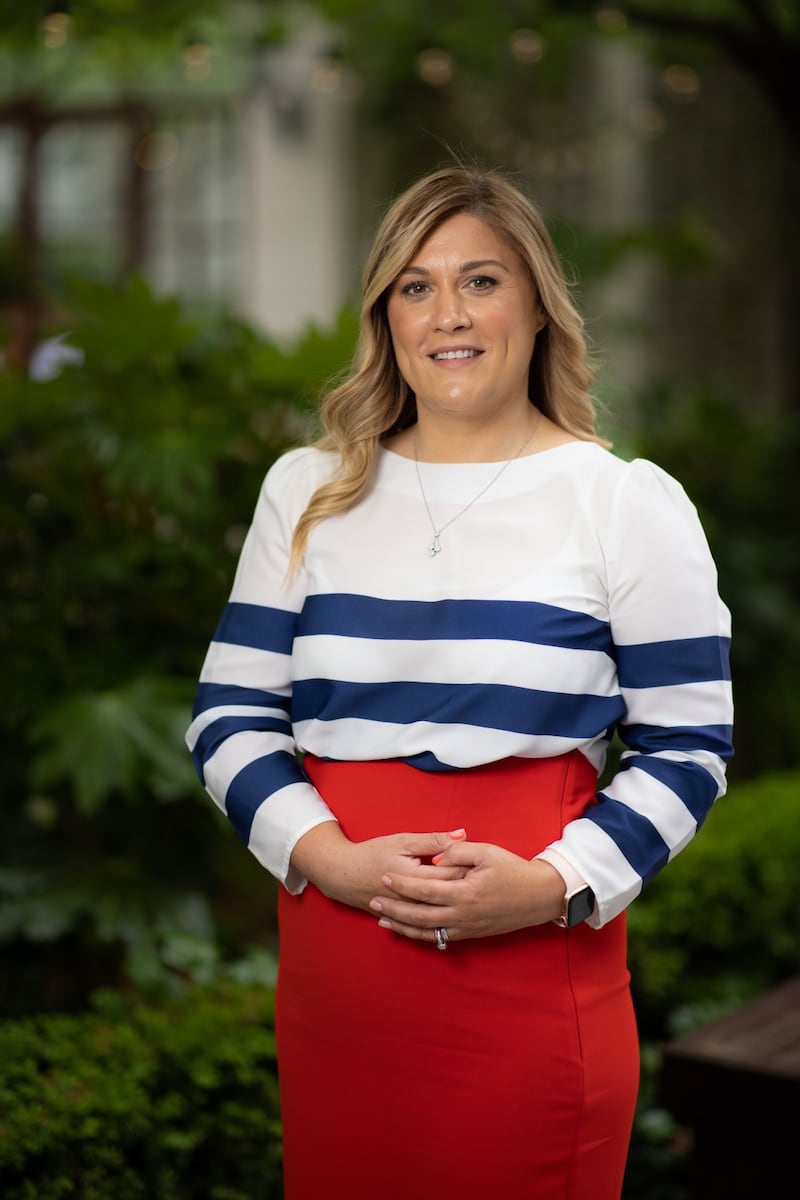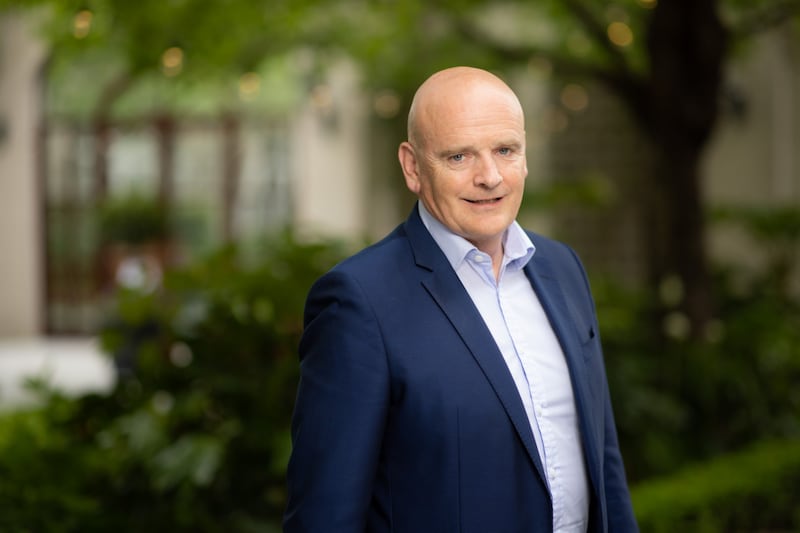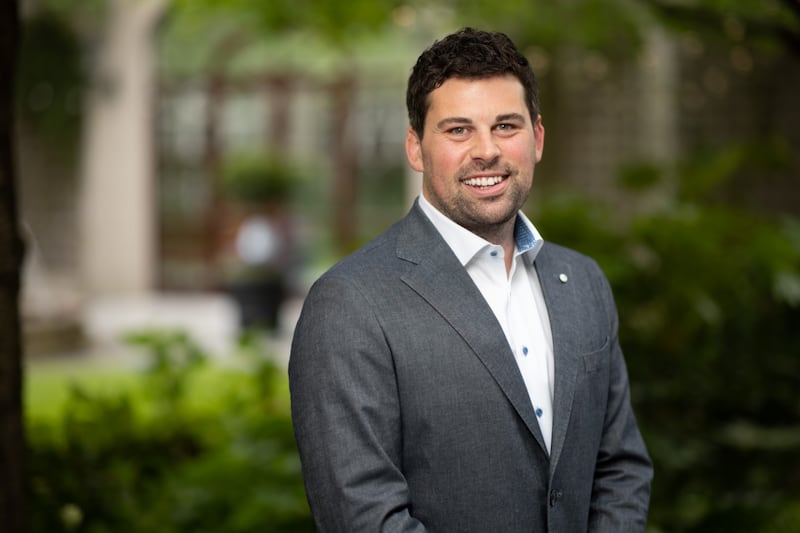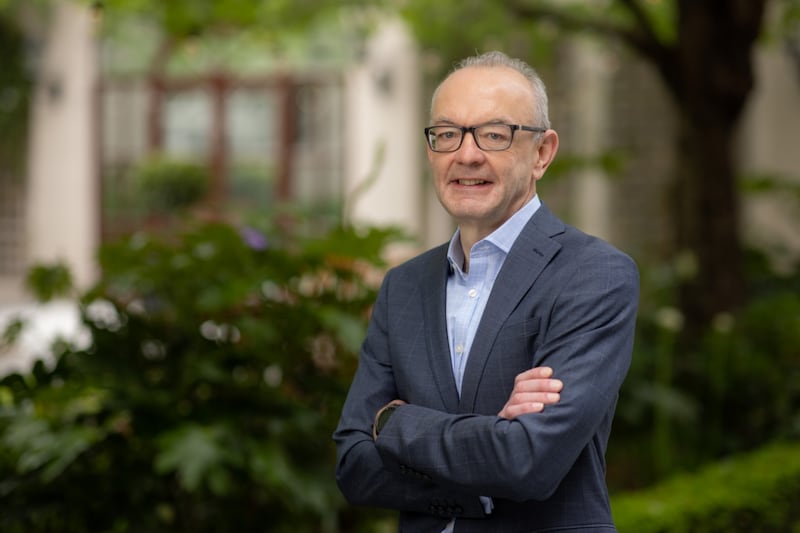Michelle Daly, P&G Cards
Michelle Daly is the managing director of P&G Cards, which was established in July 1988. The company designs, manufactures and distributes greeting cards, wrapping paper and seasonal gifts. Its customer base includes Musgrave, Dunnes Stores, BWG, Aldi and independent retailers. It employs 44 people.

What moment/deal would you cite as a turning point for the company?
We tendered for a large Irish and UK multiple group and we were awarded that tender, superseding some very big international competition. This order was for a substantial volume of cards to be delivered to multiple locations across Ireland and the UK.
The designing, manufacturing and distributing of this particular tender was a major challenge for our business at the time and it also met some bumps in the road, along with some sleepless nights.
READ MORE
It gave us the opportunity to challenge our business, showing us that we were more than capable of competing with our international competitors, and it also helped us as a business in a time when the market was in a difficult place.
To what extent does your business trade internationally and what are your future plans?
Following the ongoing issues of Brexit with deliveries, customs and the application of VAT on export goods, we have developed market channels in Malta, Spain and France, and we see a lot growth opportunities in other European markets.
We have made progress in developing the US market as we feel there is opportunity to tap into the Irish diaspora in some of the US states.
What is your growth funding path?
Re-investment back in the business on an ongoing basis is the key to funding our expansive growth plans. We have done this with the extension of our product ranges to our existing and new business channels.
Where would you like your business to be in three years?
Brexit is a huge opportunity for us to develop customer channels in other European countries. I expect to have a developed a revenue stream from the US market. The aim is to have a distribution centre based in the east coast of the US within the next five years.
What are the big disruptive forces in your industry?
Ecommerce growth within our industry is the future disrupter in our market. Post-pandemic ecommerce’s demand for greeting cards has grown overall.
However, following the lifting of Covid restrictions, people have reverted to purchasing cards in bricks-and-mortar stores as there is an emotional attachment to purchasing of a greeting card.
The global outlook in terms of supply chains, freight costs, board cost, fuel costs, which are driven by many uncontrollable factors, will be the cause of most concern in the next 24-36 months for ourselves and every other business.
How will your market look in three years?
The availability of online products will give rise to an increase in the ecommerce channels of our business. However, I do question the capacity of companies to continue to evolve their technology platforms in line with the ever-changing technology environment.
Supermarket and independent channels continue to be the main revenue channels for both ourselves and our competitors. We as a business have to be able to offer both an ecommerce and an in-store experience for our customers.
How is the current inflationary environment impacting your business?
It is difficult for every business to navigate due to the fact that inflation is an uncontrollable external factor. It directly impacts us with the demand for wage increases by our employees to curb inflation.
Fuel costs have the biggest impact on our business, both within our own fleet of vehicles along with the increase in fuel for freight and an unprecedented surcharge from our carrier company DPD.
Our commodity does not allow for cost-price increases. Therefore, the expectation is that we will have to absorb these costs so as not pass them on to the consumer.
What is the most common mistake you see entrepreneurs make?
Not having that rainy day backup fund to prepare for the inevitable bumps in the road. Cash flow is one of the key functions of a business and if you don’t manage that correctly and allow for worst-case scenarios then you can find yourself in a situation that is very difficult to navigate your way out of.
Alan Browne, Korec Group
Alan Browne is the founder and chief executive of the Korec Group, which is a provider of geospatial technology to many industry sectors. It employs more than 100 staff and generates revenues of €40 million.

What vision/lightbulb moment prompted you to start-up in business?
In 1994, while watching a demonstration in the UK of a bulldozer blade being controlled automatically by a laser beam, I saw the opportunity to introduce this technology in Ireland and how it could enable significant savings in fuel and materials.
It could also dramatically improve the quality of the finished product and reduce delivery time, particularly in road construction. Subsequent versions of this technology were used on most motorways constructed in Ireland in the early 2000s.
What was your “back-to-the-wall” moment and how did you overcome it?
Our back to the wall moment was October 2008. Our revenue run rate had dropped by over 50 per cent. We were carrying debt from an acquisition, running out of cash rapidly and consequently had to cut our workforce at the time, from 150 to 75.
We had to negotiate deals with our suppliers, creditors and banks that were all interconnected. Eventually everybody was paid in full, but it was a really tough time.
What moment/deal would you cite as the “game changer” or turning point for the company?
In 2005 we acquired a company that was five times larger than we were. That made us into one of the largest businesses in the world in our sector and provided us with the scale to shape the market.
What is your growth funding path?
We will continue to fund the organic growth of the business through cash flow. However, if we see potential acquisitions that match our vision and plans, we have the requisite funding in place to support that.
Where would you like your business to be in three years?
I would like to see us doubling the revenue in our core businesses in the UK and Ireland. There are huge opportunities in digitising the construction process both in infrastructure, such as highways and rail, and in domestic and commercial construction.
What are the big disruptive forces in your industry?
The biggest disruption is coming from what we refer to as the democratisation of data collection. Previously, collecting useful measured data required specialist training. Today, more data can be collected by a drone in a few minutes than a specialist could collect over a few days in the past.
The big challenge is what to do with all this data. It is about turning this data into actionable information and monetising it for businesses. This is achievable utilising domain specific software and industry specific insights.
How will your market look in three years?
There is a lot of talk today about autonomy. In our industry, autonomous drones or robotic dogs are collecting all sorts of data. I think we need to be careful not to see autonomy as an endgame but rather as a facilitator of better and safer outcomes.
Over the next three years in our market we will see better and more integrated use of augmented reality, mixed reality and artificial intelligence.
How is the current inflationary environment impacting your business? How do you expect things to unfold?
At the moment we are still seeing strong demand and growth for all our solutions in all our markets, but it is hard to see how some of the huge price increases and supply constraints will not have some impact on that at some stage.
We are also experiencing the added stresses and costs of doing business in a post-Brexit world and it looks like that will only increase.
All this uncertainty will create some opportunity. However, we need to ensure our solutions are necessities rather than “nice to haves”. As I heard someone say recently, we need to be a painkiller rather than a vitamin.
What is the single most important piece of advice you would offer to a less experienced entrepreneur?
Mind your cash. There are very few problems in business that you cannot overcome if you have cash or easy access to it. Make sure your customers are paying you and you are paying your suppliers. If you are running out of cash, you end up making decisions based on survival rather than growth.
Paul Stewart, My Baggage
Paul Stewart is the founder of My Baggage, which is a door-to-door shipping company that helps people move their personal effects abroad. It has more than 120,000 customers in over 100 countries with online tracking. It generates revenues of €7.5 million.

What vision/lightbulb moment prompted you to start in business?
When I was at Edinburgh University studying structural engineering, I was going home to Belfast two to three times a year and getting stung with excess baggage fees each time. I started a small student storage business in my second year and I thought shipping could be a natural progression from this, which would solve my own problem of moving my personal effects to and from Belfast.
What is your business model and what makes your business unique?
We hold contracts with couriers such as DHL, and use their infrastructure to ship our customer items around the world. We have large volume-based discounts which we pass on to our customer and which also allow us a margin.
We prepare the correct customs paperwork for each country to ensure unnecessary customs fees are not charged to our customers.
What is your greatest business achievement to date?
Expanding the business to become an international business trading in more than 100 countries. I love seeing sales coming in from exotic locations on a weekly basis, countries which we have never visited, let alone have a presence there.
That is the real power of digital marketing and the time and financial resources committed to our international marketing efforts.
What was your “back-to-the-wall” moment and how did you overcome it?
When Covid first hit the UK and Ireland, there was a full month of real uncertainly in April when revenues dropped and frontline goods were prioritised, making it difficult to ship on certain routes.
All our staff were moved to work from home, which we were luckily in a position to do easily with recent phone and IT upgrades. That was a really worrying month, trying to ensure the business could operate in these new conditions both financially and operationally.
Once the dust settled in April, we went on to have our most successful year to date. We were helping people move home who were working in countries badly affected by Covid, and more people than ever were made aware of the My Baggage brand.
What moment/deal would you cite as the “game changer” or turning point for the company?
Launching in the USA in 2018. It is now our second biggest market outside UK and Ireland, and there is still huge growth potential for us. It is a difficult and expensive market that we are still learning how to crack.
To what extent does your business trade internationally and what are your future plans/ambitions?
The majority of our sales are international outside of the UK and Ireland. In order for us to grow we need to focus on sales abroad.
We are working to launch a number of more affordable routes in some of our key countries, which will be supported by digital marketing locally. We have 10 key markets along with 90 smaller revenue countries.
Where would you like your business to be in three years?
We have plans to double the size of the business over the next three years.
How will your market look in three years?
Now that people are able to work remotely from anywhere in the world and travel has started to open up, I feel the next three years will be strong for the luggage/removal market.
What are you doing to disrupt, innovate and improve the products or services you offer?
We invest heavily in automation to reduce the amount of manual tasks we have in our business. This has really helped us grow without huge overheads.
We are working on systems to predict shipment issues before they happen. This is around customs clearance and delays, so we can solve these problems before customers are even aware there is an issue.
How is the current inflationary environment impacting your business? How do you expect things to unfold?
Fuel costs are the main concern for our business as they make up 30 per cent of our overhead. The huge increases are very worrying, and have unfortunately had to be reflected in the prices we charge customers. Couriers and shipping companies are in the same boat.
Cathal Fay, Prepay Power
Cathal Fay is chief executive of Prepay Power, which offers pay-as-you-go electricity, gas and broadband. It has more than 170,000 customers and generates €200 million in revenue. It has a team of 300 people.

What vision/lightbulb moment prompted you to start-up in business?
My career started in a big semi-state company. It was a great experience, but I realised that I wanted something faster-paced. I moved to found an ebooks and mobile app start-up back in 2000.
In mobile, I’d seen the success of pay-as-you-go and I thought that this would also be a great way to help customers budget for their energy costs. When the opportunity arose to bring prepaid electricity to the Irish market, I jumped at it.
What was your “back-to-the-wall” moment and how did you overcome it?
We’ve had a few such moments in Prepay Power. In the early days we had no cash, so we worked for quite a while without bringing in any revenue that would have covered costs like salaries or advertising. It took us 12 months to raise investment.
We just stuck at it and kept going. We ended up with two tremendous investors in Ulric Kenny and Andrew Collins, who not only invested their cash and helped guide the company direction but who have become friends.
What moment/deal would you cite as the “game changer” or turning point for the company?
We’ve gone through a number of phases of growth. The initial game changer was securing the investment to scale after many months of not being able to afford to purchase meters or to advertise.
A more recent game changer was our decision to hedge our wholesale energy costs. This is difficult to do with the lack of liquidity in the Irish market but is key to being able to protect our customers from the worst of the current market volatility.
To what extent does your business trade internationally and what are your future plans/ambitions?
For the moment, we are fully focused on the Irish market and plan on launching a number of new services for our customers. In due course, we may look at international expansion.
Where would you like your business to be in three years?
In three years’ time I’d like a business that is double its current revenues providing a more diverse range of services to customers. I’d like to be helping them to transition their usage to times when energy is cheaper and renewable generated. We’d also like to have a significant footprint in the renewable generation through asset ownership.
What are the big disruptive forces in your industry?
At the moment, the big disruptive force are high wholesale energy prices due to the Russian invasion of Ukraine. In the longer term, it is the move to renewable generation. The transition will have its challenges. We will need to ensure that we have sufficient capacity to meet demand when the wind isn’t blowing and the sun isn’t shining.
How will your market look in three years?
In three years’ time I’d expect to see the offshore wind generated power starting to come on stream and a significant level of solar generation. There will be more demand from customers through electric vehicles and heat exchangers.
How is the current inflationary environment impacting your business? How do you expect things to unfold?
Wholesale energy costs have been the driver of the inflationary environment. I’m pleased to say that our hedging strategy has helped us to protect our customers from the worst of the volatility.
I’d expect volatility to continue until we have sufficient renewable energy not only to reduce our dependence on Russian gas and its ability to drive wholesale prices, but also to provide enough base-load when the wind isn’t blowing or the sun isn’t shining.
What is the most common mistake you see entrepreneurs make?
I’ve seen many that are really good at developing a product or service but aren’t as expert in raising investment. Many choose poorly when appointing advisers. We were lucky enough to bring on board investors that really were instrumental in raising finance.
What is the single most important piece of advice you would offer to a less experienced entrepreneur?
Don’t give up. It may take longer than you think to raise investment but stick with it. By all means be flexible but remember to be true to yourself and your vision for the company.



















